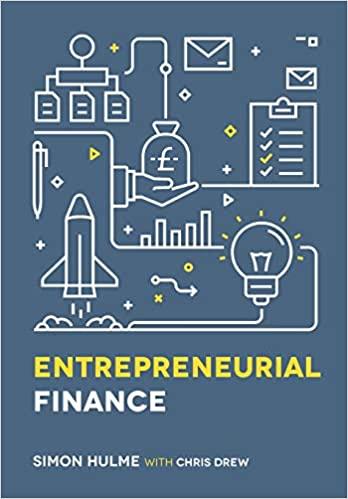Answered step by step
Verified Expert Solution
Question
1 Approved Answer
Integrative: Complete Investment decision Wells Printing is considering the purchase of a new printing press. The total installed cost of the press is $ 2
Integrative: Complete Investment decisionWells Printing is considering the purchase of a new printing press. The total installed cost of the press is $ million. This outlay would be partially offset by the sale of an existing press. The old press has zero book value, cost $ million years ago, and can be sold currently for $ million before taxes. As a result of acquisition of the new press, sales in each of the next years are expected to be $ million higher than with the existing press, but product costsexcluding depreciation will represent of sales. The new press will not affect the firm's net working capital requirements. The new press will be depreciated under MACRS using a fiveyear recovery period. The firm is subject to a tax rate. Wells Printing's cost of capital is Note: Assume that the old and the new presses will each have a terminal value of $ at the end of year
a Determine the initial cash flow required by the new press.
b Determine the periodic cash inflows attributable to the new press.Note: Be sure to consider the depreciation in year
c Determine the payback period.
d Determine the net present valueNPV and the internal rate of returnIRR related to the proposed new press.
e Make a recommendation to accept or reject the new press, and justify your answer.
Question content area bottom
Part
a Determine the initial cash flow required by the new press.
Calculate the initial cash flow will be:Round to the nearest dollar.
Installed cost of new press
$
Proceeds from sale of existing press
$
Taxes on sale of existing press
$
Total aftertax proceeds from sale
$
Initial cash flow
$
Part
b Determine the periodic cash inflows attributable to the new press.Note: Be sure to consider the depreciation in year
Calculate the periodic cash inflows attributable to the new press below:Round to the nearest dollar.
Operating Cash Inflows
Year
Revenues
$
Expenses
$
Depreciation
$
Net profits before taxes
$
Taxes
$
Net profits after taxes
$
Operating cash inflows
$
Part
Round to the nearest dollar.
Operating Cash Inflows
Year
Revenues
$
Expenses
$
Depreciation
$
Net profits before taxes
$
Taxes
$
Net profits after taxes
$
Operating cash inflows
$
Part
Round to the nearest dollar.
Operating Cash Inflows
Year
Revenues
$
Expenses
$
Depreciation
$
Net profits before taxes
$
Taxes
$
Net profits after taxes
$
Operating cash inflows
$
Part
Round to the nearest dollar.
Operating Cash Inflows
Year
Revenues
$
Expenses
$
Depreciation
$
Net profits before taxes
$
Taxes
$
Net profits after taxes
$
Operating cash inflows
$
Part
Round to the nearest dollar.
Operating Cash Inflows
Year
Revenues
$
Expenses
$
Depreciation
$
Net profits before taxes
$
Taxes
$
Net profits after taxes
$
Operating cash inflows
$
Part
Round to the nearest dollar.
Operating Cash Inflows
Year
Revenues
$
Expenses
$
Depreciation
$
Net profits before taxes
$
Taxes
$
Net profits after taxes
$
Operating cash inflows
$
Part
c Determine the payback period.
The payback period for this project is
enter your response here years. Round to one decimal place.
Part
d Determine the net present valueNPV and the internal rate of returnIRR related to the

Step by Step Solution
There are 3 Steps involved in it
Step: 1

Get Instant Access to Expert-Tailored Solutions
See step-by-step solutions with expert insights and AI powered tools for academic success
Step: 2

Step: 3

Ace Your Homework with AI
Get the answers you need in no time with our AI-driven, step-by-step assistance
Get Started


